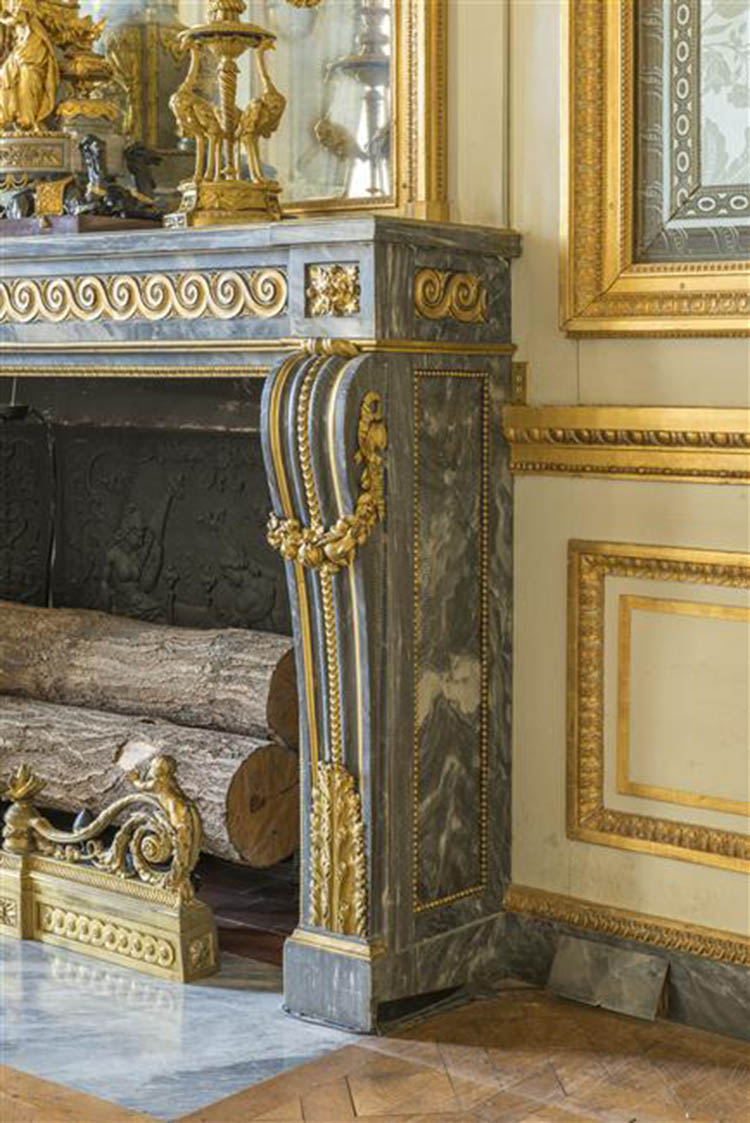Turquin marble
Download PDFTurquin Blue Marble is part of the Bardiglio marbles family. Its name cames from pardillo which means gray in Spanish. But the English speaking countries choose to call them Dove marbles because of their bluish gray hues similar to those of the birds.
Composed of saccharoidal limestone rocks, it is extracted from the Apuan Alps quarries, such as Carrara, where it is called Bardiglio Carrara. It can also be found in other careers in Sardinia and the Alps.
This natural resource was exploited since Roman times (1st Century BC). It was mostly used for bathtubs and flooring.
In the 18th century, this marble was fashionable once more. It was used in the fabrication of commodes under the reign of Kings Louis XV and Louis XVI. Later on, since blue is a cool color, it was highly appreciated during the Directoire and Empire styles as a reference to classical antiquity. Blue is difficult to find in the nature, so thanks to its rare color, it was used in ornamentation.
This was the case for the commode bought by Louis XV for his first mistress, Madame de Mailly. This rare furniture, is a masterpiece of decorative arts, it furnished the Blue Room of the Chateau de Choisy. This whole piece was in harmony with a gift that the young woman had offered to the king : a blue piece of cloth spun by herself. The Turquin blue marble top matched perfectly this room. This commode can be admire in the Louvre Museum.
This marble was also popular due to its hardness for exterior architecture and interior lining, as well as in the manufacture of fireplaces, mainly in the 18th and 19th centuries.
One of the best examples is the Louis XVI style fireplace placed in the Petit Trianon's dining room in Versailles. Others beautiful antique Turquin Blue fireplaces are located in the Marie Antoinette room in the Hôtel de la Marine in Paris, as well as the Red Room ; or the chimney of the Château de Compiègne Flowers Room, also made in Turquin blue and adorned with bronzes.
Three types of Blue Turquin can be differentiated : common, dark and flowery (Fiorito in Italian). The common refers to that blue-gray marble with sinuous veining, the dark has a darker hue, and the flowery takes its name from its veining, so sinuous that its forming flowers.
Bibliography
J. Dubarry de Lasalle, Identification of marbles, Ed. H. Vial, Dourdan, 2000
J. Dubarry de Lasalle, The use of marbles, Ed. H. Vial, Dourdan, 2005
P. Julien, Marbels, From Quarries to Palaces, ed. Le Bec en l'air, Manosque, 2006
Marmi antichi, collective work, ed. De Luca, Rome, 1998







